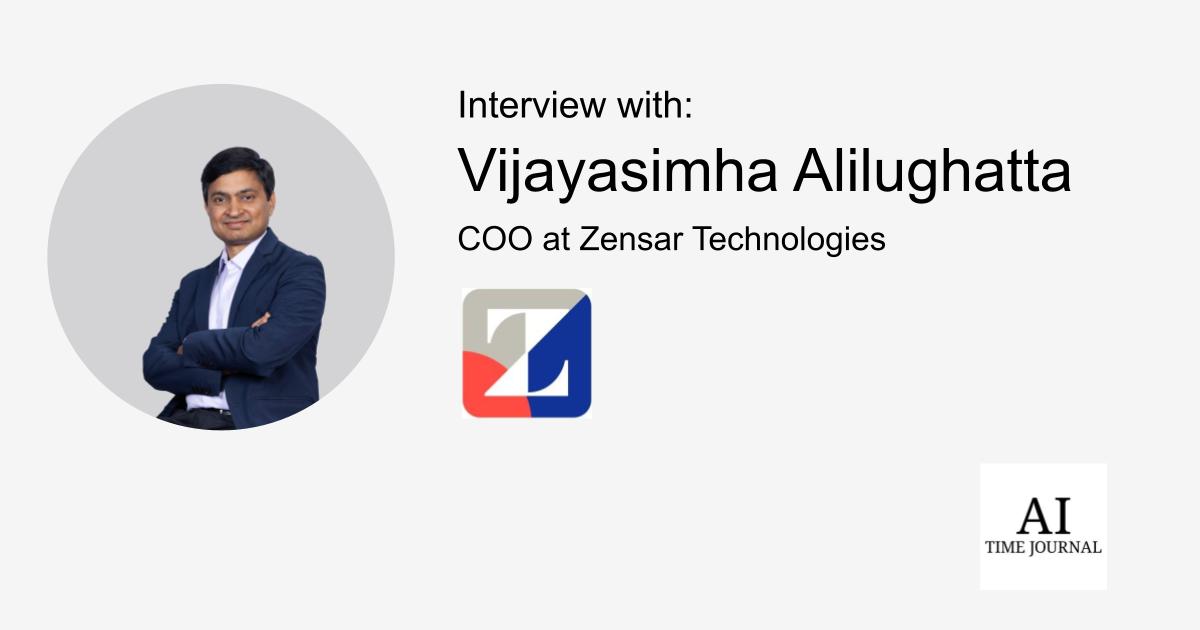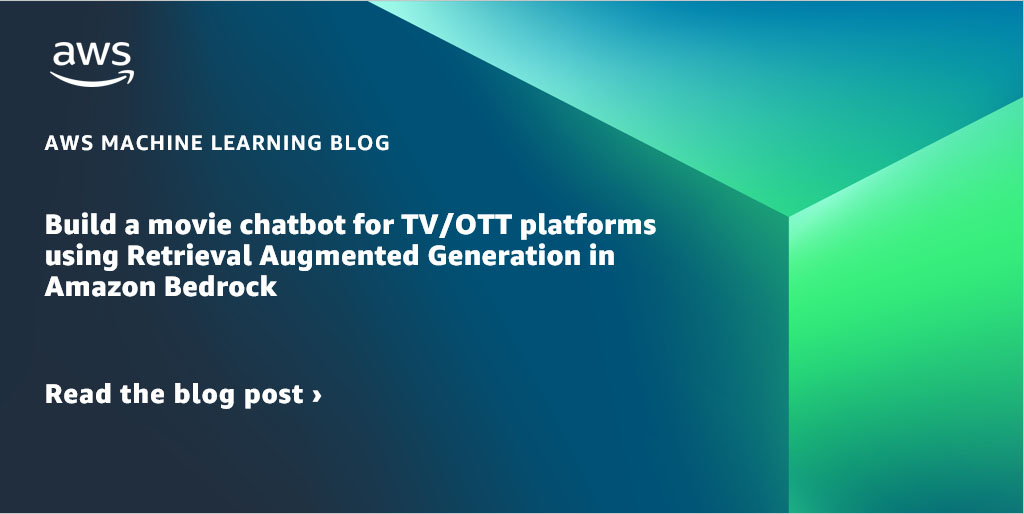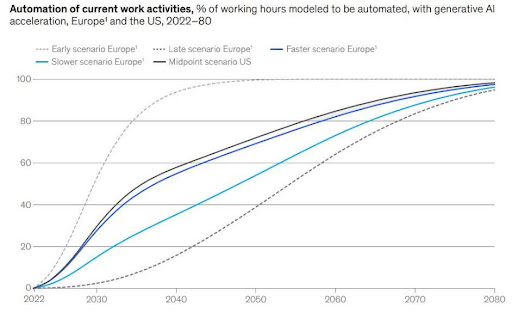In this interview, we delve into the mind of Vijayasimha Alilughatta, the Chief Operating Officer of Zensar Technologies, a figurehead in the realm of information technology. With over two decades of shaping the IT industry, Vijay offers an unparalleled view of operational excellence, client-centric strategies, and the essence of leadership that drives technological innovation. As he navigates through pivotal moments, challenges, and the evolution of IT, his insights promise to enlighten and inspire. Join us as we explore the dynamics of steering a tech giant in an ever-evolving landscape.
Vijay, with a remarkable journey of over 27 years in the IT industry, could you share a pivotal moment that significantly shaped your leadership style and how you approach operational excellence today?
The Pivotal movement was when I became part of the account management team for a marquee client who was unhappy with the status of the relationship. The turnaround that was achieved in this relationship had a significant impact on my professional development. I was fortunate to experience different types of leadership traits in this turnaround journey – client centricity, people engagement, result orientation, charismatic leadership, disciplined execution, etc. The key learnings from this experience were:
- Ensure that you have the right people on the leadership team
- Set bold, hairy, audacious Goals
- Energize the whole team to make the lofty vision happen
- Execution Excellence in everyday tasks and interactions
Reflecting on your transition from Infosys, where you scaled Fortune 500 partnerships, to leading Zensar as COO, how do you adapt your strategies to foster client delight in varying corporate cultures and market dynamics?
The foundational elements of delighting clients remain the same, irrespective of the size of the organization. Ensuring that we have a very good understanding of the client’s situation and key client imperatives is the first step in the journey. We provide credible solutions to clients’ challenges rather than enforcing one’s own piecemeal service offerings. We deliver promised services reliably on a sustained basis to gain client confidence and focus on building long-term strategic partnerships, which are based on value-oriented engagement at multiple levels and transparent communication.
At Wipro, you were instrumental in delivering double-digit growth for the largest global business line. What were some of the key challenges you faced in achieving this, and how did you navigate them?
We initially focused on getting the “Basic Right,” especially in the area of account management. By ensuring that we had the right sales and delivery teams for key client accounts and instituting a structured approach to account management in these accounts, we could fix the leaking buckets and establish a strong platform for growth. Subsequently, we focused on excellence in the key areas, i.e., solution design, service delivery, and differentiated capability development. This approach enabled us to deliver superior value to our clients, which fueled growth. The focus on making the sales-delivery continuum the default way of working ensured that the various teams worked in unison to deliver tangible benefits. This approach fostered a high-performance work culture, which enabled us to sustain industry-leading growth.
Considering your extensive experience in building world-class teams, what are your core principles for cultivating a high-performance culture within an organization?
Based on my experience, I think the following five core principles are key to cultivating a high-performance culture:
- I firmly believe in the “Who first, then what paradigm.” Having people with the right mindset and complementary skills is an extremely important part of establishing a high-performance culture.
- Setting goals that have the right balance between ‘stretch quotient’ and ‘ability to achieve’ propel the teams to improve their performance and benchmark themselves against industry-leading performances
- Combining empowerment with accountability minimizes the hindrances to achieving goals while giving teams the right result orientation
- Pursuit of Excellence is a core tenet of high-performing teams. When I was young, I came across a quote: “Greatness lies in simple things, but greatness is no simple thing.” I have experienced this amply while being part of high-performing teams and watching high-performance teams from the sidelines.
- Disciplined execution is the key to delivering industry-leading performance
Leadership in the IT sector often involves making tough decisions. Can you share an instance where you had to make a challenging decision, and how it impacted your team or the organization positively?
We were pursuing a large deal in which we were trying to build an industry utility in partnership with a client. The utility was planned to be built by leveraging the custom application of the client that was supporting that particular business value chain. Upon completion of the due diligence, we realized that the custom application did not lend itself easily to the creation of the utility. Despite the deal pursuit being in an advanced state, we decided to communicate this transparently to the client. While it resulted in temporary unhappiness at the lower levels of the client organization, the relationship at the senior levels was significantly enhanced, and the long-term partnership was strengthened. This also prevented a significant deviation from the envisaged business case, which would have resulted in a major impact on the P&L for years together.
The IT industry is rapidly evolving with technological advancements. How do you ensure that Zensar remains at the forefront of innovation, and what role does your leadership play in this?
Technology-led transformation is at the forefront of establishing and refining new business models. We have structured our offerings around the Experience-Engineering-Engagement (EEE) continuum. In the EEE continuum, we assist our clients in designing world-class experiences for their customers, building applications and platforms that make the envisioned experience a reality, and then helping clients effectively engage with their consumers about the reimaged offerings. We are verticalizing the offerings to the specific needs of industry segments by leveraging the deep domain expertise of our Industry services groups. People are the lynchpin of technology-led business transformation.
Consequently, we are focused on talent transformation and capability enrichment at scale in critical areas like AI/Gen AI, cloud, advanced analytics, advanced engineering, industry domain products, enterprise applications, etc. In addition to enriching our capability, we are partnering with our alliance partners to deliver integrated solutions to our clients. Experts in our innovation hub ZenLabs, are collaborating with many of our clients to develop solutions for difficult business problems leveraging the latest technologies.
Client relationships are crucial in the IT business. Based on your experience, what are the key factors in establishing and maintaining trust-based partnerships with marquee clients in the BFSI sector and beyond?
In my experience, trust-based relationships are built by focusing on the following elements:
- Intimacy: Develop an in-depth understanding of the client’s business as well as the emerging trends in the industry that impact the client’s business
- Credibility: Craft credible solutions that solve business problems of clients in the most optimal manner
- Reliability: Deliver on the commitments time and again. Communicate issues transparently promptly and minimize negative surprises.
- Partnership Orientation: A long-term ‘Win-Win’ approach should act as a compass for all decision-making at the account level.
- Empowering Account teams to act as custodians of their respective Client’s interests.
In your journey through significant roles across Infosys, Wipro, and now Zensar, how do you perceive the evolution of the IT industry in India, and what future trends do you predict will shape the industry?
The Indian IT industry has been a poster child of adapting effectively to the changing market needs. We have continually reinvented ourselves to deliver value to our global client base. We have truly lived the maxim of cannibalizing our own business models at the right time instead of allowing someone else to cannibalize our business model. The transformation from being seen as body shops, low-price commodity service providers, and order takers to being viewed as trusted transformation partners has been an exhilarating journey. Emerging technologies will enable the convergence of the physical, digital, and biological like never before, and this has the potential to significantly alter the human way of life. In this VUCA world, I am confident that the Indian IT industry will continue to tread on the path of continuous enrichment to stay relevant and sought-after.
On a more personal note, leading large teams and managing expansive operations must require a great deal of energy and resilience. How do you maintain your motivation and balance your professional and personal life?
The quest to enrich oneself spiritually gives the energy and resilience to deal with the daily grind. When one realizes that we are a part (albeit a tiny part) of that huge enlightened system, then one can handle the trials and tribulations of life with equanimity. The constant endeavor is to try to be the best version of oneself and relish life’s day-to-day experiences!
Fatal error: Uncaught ArgumentCountError: Too few arguments to function astra_post_categories(), 0 passed in /home/customer/www/aitimejournal.com/public_html/wp-content/themes/astra-child/functions.php on line 448 and exactly 3 expected in /home/customer/www/aitimejournal.com/public_html/wp-content/themes/astra/inc/blog/blog-config.php:583
Stack trace:
#0 /home/customer/www/aitimejournal.com/public_html/wp-content/themes/astra-child/functions.php(448): astra_post_categories()
#1 /home/customer/www/aitimejournal.com/public_html/wp-includes/class-wp-hook.php(308): category_tag_after_post(”)
#2 /home/customer/www/aitimejournal.com/public_html/wp-includes/class-wp-hook.php(332): WP_Hook->apply_filters(NULL, Array)
#3 /home/customer/www/aitimejournal.com/public_html/wp-includes/plugin.php(517): WP_Hook->do_action(Array)
#4 /home/customer/www/aitimejournal.com/public_html/wp-content/themes/astra/inc/core/theme-hooks.php(304): do_action(‘astra_entry_con…’)
#5 /home/customer/www/aitimejournal.com/public_html/wp-content/themes/ in /home/customer/www/aitimejournal.com/public_html/wp-content/themes/astra/inc/blog/blog-config.php on line 583



